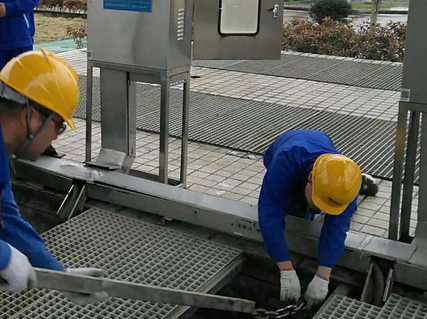Maintenance and care of sewage lift
The maintenance and care of the sewage lifter is the key to ensure its normal operation and extend its service life. The following are some specific maintenance and care measures:
1. Regular inspection and cleaning
Power supply and connection inspection:
Ensure that the power supply connected to the sewage lifter is stable and there is no looseness or damage.
Regularly check whether there are stains and water leaks at the water inlet pipe connection connected to the sewage lifter. If found, it should be cleaned and repaired in time.
Box cleaning:
You can pour an appropriate amount of detergent through the bathroom equipment connected to the sewage lifter. After the detergent enters the sewage lifter box, wait for about 30 minutes for the detergent to fully play its role.
After that, open the bathroom equipment connected to the sewage lifter for secondary cleaning with clean water. When the equipment has completed 2 to 3 drainages, the maintenance is completed.
2. Internal inspection and maintenance of the equipment
Bearing and impeller inspection:
Frequently check the ball bearings of the equipment. If the inner and outer sleeves are worn, loose, the ball is worn, or there are spots on the surface, they should be replaced in time.
Regularly check whether there are cracks or small holes on the impeller of the equipment, and check whether the fixing nut of the impeller is loose. If there is a problem, replace or tighten it in time.
Maintenance of transmission belt and screws:
When the transmission belt of the sewage lifting pump is not in use, the belt should be removed, cleaned with warm water, wiped dry and stored. The storage place should avoid direct sunlight, and there should be no oil, corrosive substances, etc.
All screws and bolts on the equipment should be cleaned with a wire brush, and then coated with engine oil or immersed in diesel for preservation to prevent corrosion.
3. Seasonal maintenance
Winter antifreeze:
When used in the cold winter season, after parking, the drain screw plug at the bottom of the pump body needs to be unscrewed to drain the medium to prevent freezing and cracking.
Long-term outage treatment:
If the sewage lifter is out of use for a long time, the pump needs to be completely disassembled, the water needs to be wiped dry, the rotating parts and joints need to be coated with grease and installed, and properly stored.
4. Lubrication and seal adjustment
Lubricant replacement:
The lubricant of the sewage lifting pump should be replaced after 100 hours of operation within one month, and the oil should be changed every 500 hours thereafter.
Packing gland adjustment:
Frequently adjust the packing gland of the sewage lifting pump to ensure normal dripping in the packing chamber (preferably dripping out) to avoid excessive or insufficient leakage.
5. Other precautions
Power management:
Before performing any maintenance or servicing work, be sure to cut off the power supply of the sewage lifting device to ensure safety.
Professional maintenance:
For some complex maintenance tasks, such as motor repair and control system debugging, it is recommended that professionals perform the operation.
Record and track:
Establish maintenance and servicing records for sewage lifting devices to track the operating status and maintenance of the equipment so as to promptly discover and solve problems.





